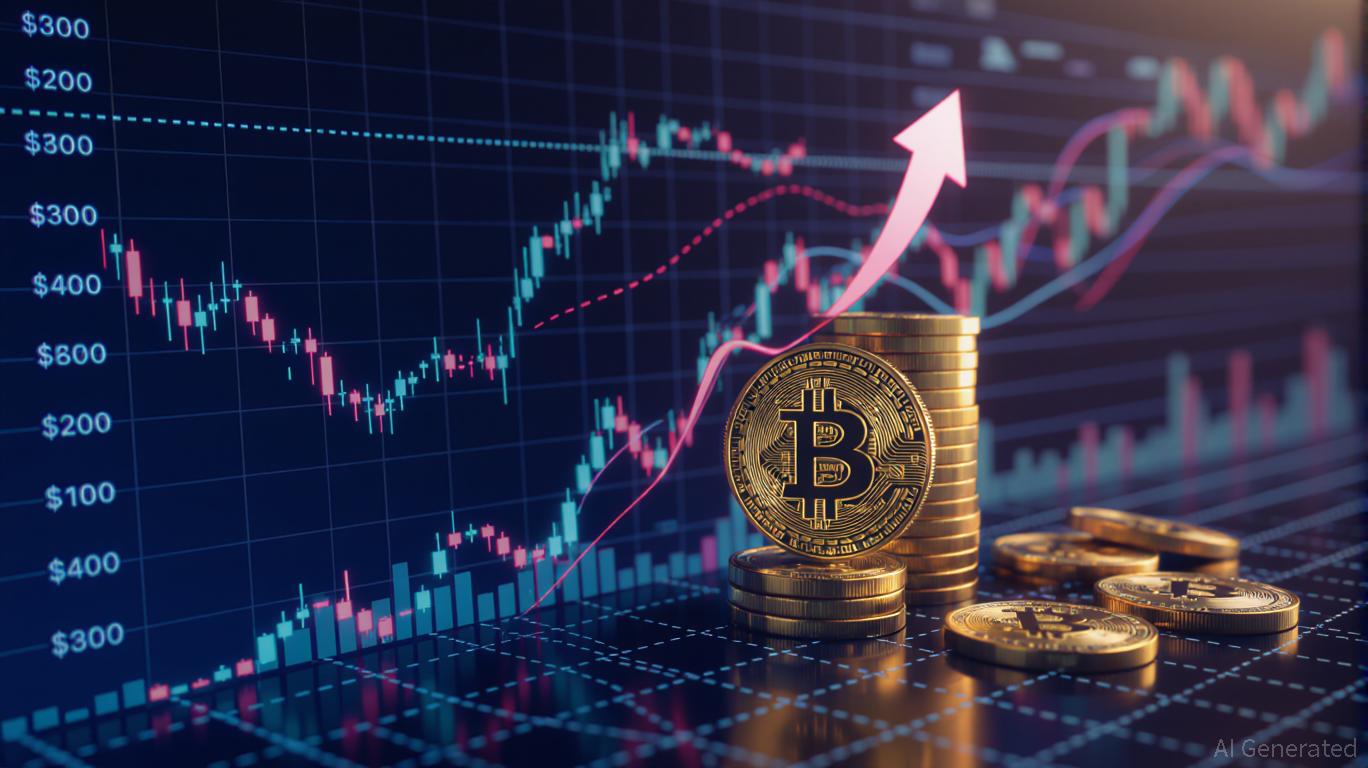Zcash Halving and Its Impact on the Market: Price Movements After Halving and Investor Sentiment
- Zcash's 2025 halving triggered a 750% price surge to $400+, driven by privacy-focused demand and technical upgrades. - Unlike Bitcoin's stagnant $103k price, Zcash's 28% shielded supply reflects growing demand for privacy amid regulatory scrutiny. - Investor psychology shifted toward privacy coins, with Zcash outperforming Bitcoin as capital rotated during market volatility. - Analysts predict Zcash could reach $580 if it breaks $500 resistance, contrasting Bitcoin's deflationary model with utility-drive
Halving events, which reduce the rate at which new coins are created, have long fascinated the cryptocurrency community, as they are believed to restrict supply and fuel price speculation.
Zcash’s Post-Halving Momentum: Privacy at the Forefront
In late 2025, Zcash’s price movement stood out from the broader crypto downturn, climbing more than 750% from under $50 in early September to over $400 by the end of October, based on a
This rally was driven by both technical improvements and evolving investor interests. The shielded portion of Zcash’s supply now makes up 28% of its total circulating coins (4.5 million ZEC), indicating a deliberate move toward privacy as regulatory oversight increases for transparent blockchains, according to the

Investor Sentiment: FOMO and Shifting Capital
The recent Zcash rally highlights a notable change in investor mindset. Analysts have observed that Zcash often moves inversely to
Past Bitcoin halvings have shown similar psychological patterns. For example, the 2020 halving was followed by a dramatic bull run to record highs, driven by institutional interest and speculative excitement, according to a
Arthur Hayes, BitMEX’s co-founder, has even forecasted that Zcash could reach $10,000 per token, citing its resistance to quantum attacks and expanding user base, according to the
Zcash vs. Bitcoin: Utility Versus Scarcity
Bitcoin’s post-halving rallies have traditionally been linked to its limited supply and its reputation as digital gold. The halvings in 2012, 2016, and 2020 each set off extended bull markets, with prices eventually reaching new peaks, according to the
This difference is significant. While Bitcoin’s main appeal is as a value store, Zcash’s advantage is its ability to support confidential transactions and comply with changing privacy regulations. As one analyst put it, Zcash’s reputation as “encrypted Bitcoin” captures its dual nature—offering Bitcoin-like economics alongside advanced privacy, according to the
Market Forces and What Lies Ahead
The interaction between Zcash’s technical progress and investor sentiment creates a feedback loop. Enhanced privacy features attract more users, boosting demand and prices, which then draws in additional speculative capital. This is reflected in Zcash’s trading activity, which increased by 2.46% to $1.37 billion, surpassing Bitcoin’s falling volume, according to the
Looking forward, Zcash’s future will hinge on its ability to sustain its
Conclusion
The 2025 Zcash halving has reignited discussions about privacy’s role in digital finance. Its post-halving rally, powered by both technological advancements and changing investor preferences, underscores the rising appetite for assets that combine practical use with scarcity. While Bitcoin’s history offers a useful lens for comparison, Zcash’s distinct value proposition points to a new model—one where privacy is central to market trends rather than a peripheral concern. As regulatory challenges grow and institutional attitudes shift, Zcash’s adaptability will determine whether its current surge is a brief outlier or the start of a new chapter for privacy-oriented cryptocurrencies.
Disclaimer: The content of this article solely reflects the author's opinion and does not represent the platform in any capacity. This article is not intended to serve as a reference for making investment decisions.
You may also like
Supervised Blockchain Banking Connects Traditional Finance and Digital Assets
- Telcoin becomes first U.S. digital asset bank with Nebraska regulatory approval, launching eUSD - the first bank-issued stablecoin backed by U.S. deposits and treasuries. - JPMorgan's JPMD deposit tokens enable instant 24/7 transactions on Base blockchain, offering yield-generating digital claims on actual bank deposits unlike traditional stablecoins. - Thunes' blockchain infrastructure solutions bridge digital-physical finance gaps, supporting $10B market growth by enabling seamless fiat-digital asset c

Bitcoin News Update: Bipartisan Deal Faces Delays Due to Healthcare Disagreements and Trump Tariff Challenges
- U.S. lawmakers near bipartisan deal to end 40-day government shutdown, funding federal operations through January 30 with ACA tax credit votes and Trump's reversed firings. - House Democrats split over healthcare provisions, while Senate faces hurdles in passing funding package due to healthcare disputes and procedural challenges. - Markets react mixed: crypto surges on shutdown resolution optimism but ETFs see outflows, while semiconductors face volatility amid analyst price target adjustments. - Prolon

MMT Token Experiences Rapid Price Increase: Analyzing Blockchain Governance and Factors Driving Market Sentiment
- MMT Token surged 4,000% during its 2025 TGE before a 70% correction, driven by governance innovation and market sentiment shifts. - Momentum Finance's veMMT model locks tokens for governance rights, while buybacks using protocol fees create deflationary pressure. - Institutional backing ($14.5M IDO) and cross-chain partnerships with Wormhole/LiFi boosted MMT's appeal as a liquidity engine for Sui's ecosystem. - Volatility risks persist due to macroeconomic factors, security concerns, and unproven scalabi

Modern Monetary Theory and the Transformation of Cryptocurrency Valuations: Fresh Momentum or a Risky Gamble?
- MMT-driven fiscal expansion by central banks reshapes crypto valuations, with 55% of hedge funds holding digital assets by 2025. - Algorithmic stablecoins like USDsd expose governance flaws during monetary expansion, while Bitcoin faces inflation-paradox challenges. - CBDCs emerge as government-backed alternatives, prioritizing stability over innovation amid regulatory scrutiny of decentralized models. - MMT's dual impact creates opportunities for institutional adoption but risks centralizing crypto thro
